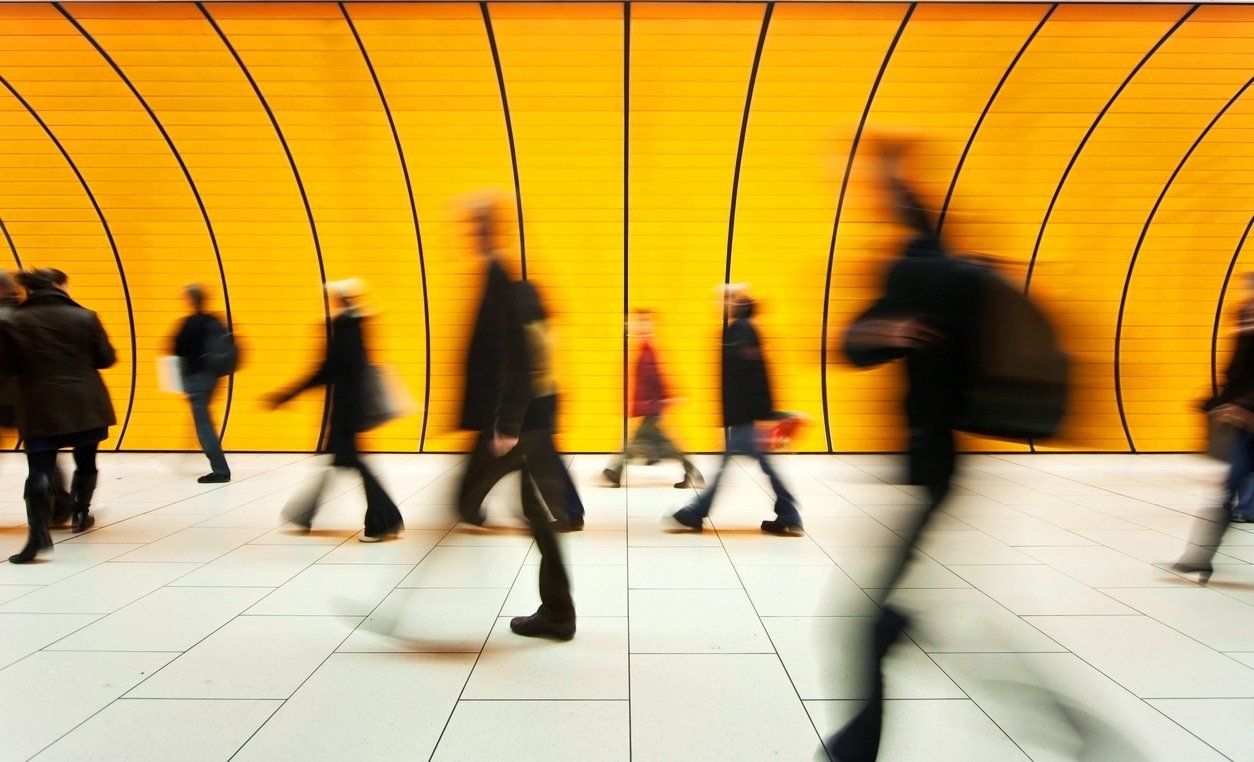Keeping the rail sector safe in the post-pandemic era
Jash Bansidhar
Managing Director
ADVANTECH EUROPE

As with many sectors, the effects of Covid-19 on the rail industry have been far-reaching, with a huge impact on operations, not least in terms of passenger numbers. Figures from the Rail Safety & Standards Board in the UK, for example, suggest that domestic passenger numbers fell at one point as low as 4%, and the picture is similar elsewhere in Europe.
Early detection of potentially infected individuals is key
To address this, many rail companies worldwide are now screening individuals for body temperature using the latest technology on arrival at the station. This typically involves the deployment of a video Artificial Intelligence (AI) solution which based on a thermographic smart camera which can detect any high temperature by converting infra-red radiation into a grey value, then calculating the thermal information through a measurement algorithm model.
Any passenger displaying a high temperature can then be checked again using a thermometer, and not allowed to travel if this is confirmed. Fever screening of this kind can assess up to 15 people per second, displaying results within 0.5 seconds, meaning it can withstand even the busiest periods of the day.
Similarly, an AI-based facial recognition system can immediately detect whether individuals entering a station or other restricted area is wearing the required face protection, then issuing a polite reminder to do so, and even preventing them from moving further through the station till they have donned the required protection.
The burgeoning
role of robots
In some transportation hub environments, humanoid robots, such as Softbank’s Pepper robot, are being deployed to undertake the scanning process at the entrance. A message is displayed on the robot’s front if an individual is identified as not wearing a mask, providing a gentle reminder, or if a high temperature is identified. Robots can of course work safely and are immune to the risks that would face a human colleague attempting to undertake monitoring of this kind.
Going even further, facial recognition technology can even be used to trace individuals who were known to be in a particular station environment, if it later transpires that they were in the vicinity at the same time as a Covid-19 carrier.
All of these functions can be supported by Advantech technologies such as the company’s NVIDIA Jetson AI systems, which are ideal for edge AI systems using facial recognition from multiple cameras as well as thermal imaging cameras for face-mask and high temperature (fever) recognition.
As an aside, AI also offers huge potential when it comes to user experience.
Today’s passenger does not want to spend time queueing for tickets, information and other related services. Here again, using AI for facial recognition, for example, can speed up the payment and ticketing process exponentially. Narrow, fanless PCs are widely used alongside these AI technologies for applications such as passenger control barriers. Advantech systems for automatic fare collection and ticketing are now in widespread use on both the Hong Kong and Singapore Metro systems, as well as the Washington Metro.
“Any action which can be taken to eliminate the need for rail operator and station staff to have direct contact with potentially infected surfaces and objects, should be carefully considered.”
Ensuring
social distance

Another way of helping to keep people safe and ensure adherence to social distancing requirements is the use of people counters to track occupancy levels in waiting rooms and carriages. Specifiers can select from either infra-red technology, or more powerful, video-based systems which can connect to Advantech’s AI or “ITA product family” on-board computers to monitor occupancy, automatically producing an alert if levels exceed a pre-determined maximum, to allow the necessary intervention measures to be taken.
For all of these applications, Advantech is able to supply both the required computer systems and, in collaboration with is global network of sector-leading partners, compatible technologies such as thermographic cameras, network switches, Wi-Fi access points, device servers and cellular routers, as well as facial recognition software, fever screening applications, the tracking system for infected patients, and the counting systems for social distance monitoring.
Advantech is also upgrading touch-panel computers to have anti-microbial properties, with silver rather than copper as the active ingredient in the latest touch-screen technology, the Antimicrobial Corning® Gorilla® Glass.
Co-creation:
a strategy for the long term
This challenge of providing the right technology solutions is being addressed by a strategy which we have termed ‘co-creation’. This is aimed at simplifying the path towards digitisation, by removing significant time, cost, complexity and risk from the process.
In the rail sector, as elsewhere, this is being achieved through the establishment ecosystem of domain-focused software partners and system integrators (SIs), together creating solution-ready packages (SRPs) that run ‘out of the box’. Our thinking is that if we provide SIs with SRPs that already include around 70% of the solution, then they only have to perform ‘last-mile’ customisation, which is less resource-intensive. – ensuring fit-for-purpose, future-proof solutions, designed to work in tandem with the ‘new normal’ we must contend with.



